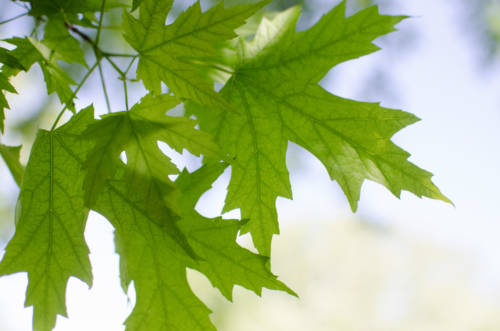The Very Real Healing Power of Trees
New studies suggest that trees, in addition to being beautiful, providing shade, and absorbing greenhouse gases, might also add approximately 1.5 years to your life. How, you ask?
According to new research by psychologist Omid Kardan of the University of Chicago, there is “a significant independent effect of trees on the street on health,” and the effect seems to be most profound on residents of tree-lined urban areas, e.g., trees may trigger a happy-hormone cascade in our brains by reminding us of the peaceful nature that echoes beyond the city confines. Health improvements include the inherently calming psychological effects of trees, as well as a reduced risk of heart disease, stroke, and obesity– which is an interesting affirmation considering that Eastern cultures have long prized the healing power of trees.
Many characters in the Chinese alphabet are modeled after trees because they constitute such a fundamental aspect of life; doctors in Japan frequently recommend Forest Bathing as a low-impact means of stress relief; and many Hindu deities are often depicted on, under, or in relation to trees, which connotes healing and the ability to channel a fundamental life force. (The Buddha is said to have been sitting under a pipal tree— also known as the Bodhi tree— in Bodh Gaya, India, when he vowed never to get up until he discovered the truth. His subsequent revelations form the core of what is now formally recognized as Buddhism.)
“Trees may trigger a happy-hormone cascade in our brains by reminding us of the peaceful nature that echoes beyond the city confines…”
The rhetoric here is likely intuitive: in our fast-paced, technology-driven world, trees take on an even more vital role. Studies like these seem to confirm something that we already inherently know: “that which grows around us is good for us,” because these plants have to survive in the same conditions we do. In 2014, The Atlantic reported that trees in urban areas are increasingly (if not more) important than trees in rural areas, saving approximately $6.8 billion in averted health costs annually in the U.S. alone. As James Hamblin writes in the piece:
“When the emerald ash borer began ravaging thousands of trees in the American Midwest, as Lindsay Abrams noted in The Atlantic last year, rates of human death from cardiovascular and respiratory illness increased. One study monitored disease rates in 15 states from 1990 to 2007, where the borer was associated with 6,113 human deaths from illness of the respiratory system and 15,080 deaths from heart disease. And those medical outcomes don’t even include the known psychological merits of tree proximity. In one famous 1970s study of patients recently liberated of their gall bladders in a Pennsylvania hospital, those whose rooms had a view of trees recovered more quickly than those looking out at another building.”
Two years later, Kardan’s research suggests a way to quantify this effect in the form of life years preserved. We always knew that trees made us feel good, but now science is backing up this phenomenon with verifiable evidence. The healing power of trees has always been an unmistakable (if not esoteric) concept, but now we can measure it. It’s unlikely that there’s any human out there who would refute such findings, but now, if they ask: we’ve got the numbers.




































